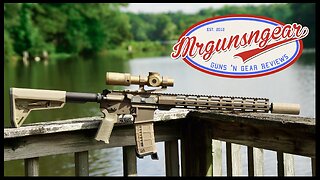Premium Only Content

👉Triple Lens Endoscope Camera with Light, Sound, Video DEPSTECH DS700
Great Product! DEPSTECH DS700 borescope Endoscope
About this item
7'' Ultra-Wide IPS Screen - 7-inch display,
Innovative Triple-Lens Endoscope with Light - Its triple lenses capture images from different angles, providing for a more comprehensive view of the inspection area.
Efficient Split Screen View - The main camera and side camera can be used independently or simultaneously, each with its own lighting to illuminate even the darkest areas. You can compare different views side by side in split screen mode.
3.3ft Soft Wire & 13ft Gooseneck Snake - The heavy-duty Goosebeck camera cable provides the perfect blend of flexibility and stiffness, allowing you to effortlessly manipulate the snake camera into hard-to-reach regions such as pipelines, engines, air ducts, and other tight spots.
Affiliate Link to this product: https://amzn.to/3E5GqvX
Cylinder Inspection: Mechanics use endoscopes to look inside cylinders through spark plug holes. This helps in checking the condition of the piston, cylinder walls, and valves without disassembling the engine.
Fuel System Inspection: Checking inside fuel lines and tanks to identify any clogging or corrosion.
Exhaust System: Inspecting the internal structure of the exhaust system including catalytic converters and mufflers for damage or obstructions.
Cooling System: Assessing the inside of radiators and cooling passages for corrosion or blockages that might hinder the cooling efficiency.
Transmission and Gearbox: Checking for wear and tear inside the transmission, which is otherwise a labor-intensive process to disassemble.
Air Conditioning System: Inspecting the AC ducts and components to detect leaks, mold, or other potential problems.
Wiring and Electrical Components: Investigating inside wiring conduits and other hidden areas to trace wiring issues or shorts.
Structural Inspections: Looking inside chassis members and other structural components to check for hidden rust, cracks, or other structural damage.
Undercarriage and Suspension: Using an endoscope to check hard-to-see areas of the undercarriage and suspension components for damage or wear.
Door and Window Mechanisms: Inspecting inside door panels and other enclosed areas to diagnose problems with window regulators, door locks, etc.
Turbocharger and Supercharger: Examining the blades and internal parts of forced induction systems for cracks, wear, or other damage.
HVAC System: Checking heating, ventilation, and air conditioning ducts for any obstruction, leak, or damage.
Brake System: Inspecting inside brake calipers and other components for wear and proper operation.
Home Plumbing Inspection: Endoscopes can be used to check pipes for clogs, leaks, or other issues. You can inspect sinks, toilets, and drains without the need for disassembly.
HVAC System Maintenance: Check ductwork and other hidden areas in heating and cooling systems for dust, mold, or blockages.
Pest Inspection: Look inside walls, attics, or other enclosed spaces to identify pest infestations like rodents or insects.
Electrical Work: Inspect inside walls or conduit for wiring issues, or to help route new wiring through tight spaces.
Building Inspection: Examine the structural integrity of buildings, looking for cracks, water damage, or other hidden issues inside walls, floors, or ceilings.
Aquarium Maintenance: Inspect hard-to-reach places in aquarium setups for algae growth, detritus, or the well-being of aquatic animals.
Outdoor Exploration: Use an endoscope to explore hard-to-reach natural formations like burrows, hollow trees, or underwater environments.
Lost Item Retrieval: If you drop something small and valuable down a drain or into a tight space, an endoscope can help you locate it.
Avoid Electrical Hazards: Be mindful of electrical components or wiring when using an endoscope.
Avoid Over-Bending: Most endoscopes are somewhat flexible, but forcing them into sharp bends can damage the fibers inside.
Avoid High-Temperature Areas: Unless explicitly designed for it, avoid using an endoscope near or inside extremely hot areas (like an operating engine or furnace) as this may damage the device.
Cave Exploration and Archaeology: One of the most exciting uses of an endoscope could be in the exploration of hidden cavities within caves, underground chambers, or archaeological sites. In places where human access is either impossible or could cause damage to fragile environments, an endoscope allows scientists, explorers, and archaeologists to investigate without disturbing the surroundings.
Uncovering Historical Secrets: Archaeologists can use endoscopes to explore inside tombs, pyramids, or other historical structures without invasive techniques that might damage or alter the site. This could lead to new insights into ancient civilizations and their practices.
-
 8:06
8:06
MikesCarInfo
1 year ago $0.02 earnedCybertruck Drama -- Tesla Controversy
119 -
 45:39
45:39
Survive History
11 hours ago $2.17 earnedCould You Survive in the Shield Wall at the Battle of Hastings?
20.9K5 -
 1:50:28
1:50:28
TheDozenPodcast
9 hours agoViolence, Abuse, Jail, Reform: Michael Maisey
54.3K2 -
 23:01
23:01
Mrgunsngear
1 day ago $0.68 earnedWolfpack Armory AW15 MK5 AR-15 Review 🇺🇸
54.5K12 -
 25:59
25:59
TampaAerialMedia
1 day ago $1.31 earnedUpdate ANNA MARIA ISLAND 2025
30.8K3 -
 59:31
59:31
Squaring The Circle, A Randall Carlson Podcast
11 hours ago#039: How Politics & War, Art & Science Shape Our World; A Cultural Commentary From Randall Carlson
23.9K2 -
 13:21
13:21
Misha Petrov
11 hours agoThe CRINGIEST Thing I Have Ever Seen…
19.3K42 -
 11:45
11:45
BIG NEM
7 hours agoWe Blind Taste Tested the Best Jollof in Toronto 🇳🇬🇬🇭
12.7K -
 15:40
15:40
Fit'n Fire
11 hours ago $0.20 earnedArsenal SLR106f & LiteRaider AK Handguard from 1791 Industries
11.1K1 -
 8:34
8:34
Mike Rowe
6 days agoWhat You Didn't Hear At Pete's Confirmation Hearing | The Way I Heard It with Mike Rowe
48.9K21